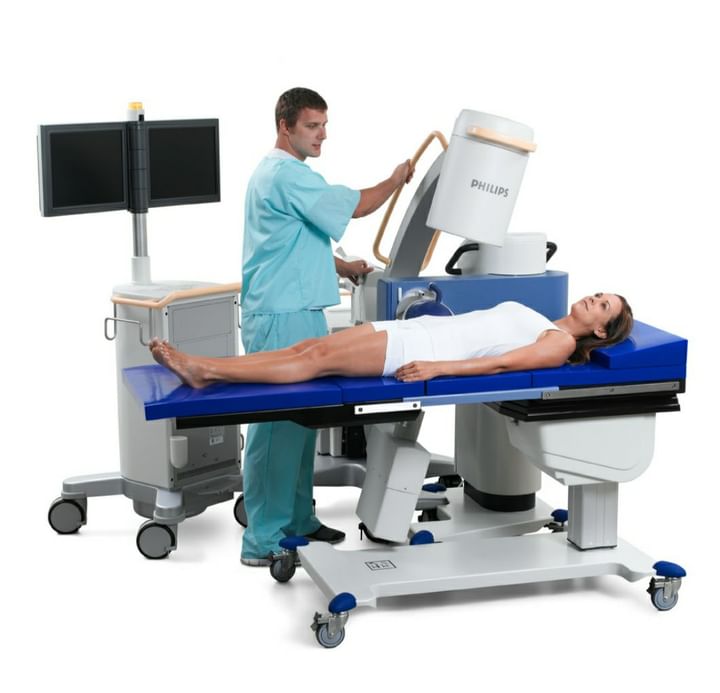Get the App
For Doctors
Login/Sign-up
Last Updated: Jan 10, 2023
BookMark
Report
Kidney Stone Treatment Without Surgery!
Dr. Satyajeet P PattnaikUrologist • 17 Years Exp.MBBS, MS- General Surgery, MCH- Urology, Fellowship Minimal Access Surgery
Extracorporeal shock wave lithotripsy (ESWL) for kidney stones
Treatment overview -
- Extracorporeal shock wave lithotripsy (ESWL) uses electromagnetic waves to break a kidney stone into small pieces like sand particles that can more easily travel through the urinary tract and pass from the body.
- You lie on a water-filled cushion, and the surgeon uses x-rays or ultrasound tests to precisely locate the stone. Electromagnetic waves pass through your body without injuring it and break the stone into small pieces. These small pieces move through the urinary tract and out of the body more easily than a large stone.
- The process takes about half an hour.
- You may receive local anaesthesia
What to expect?
- ESWL is usually an outpatient procedure. You go home after the treatment and do not have to spend a night in the hospital.
- After ESWL, stone fragments usually pass in the urine for a few days. If you have a larger stone, you may need more than 1 sitting of ESWL.
Why it is done?
- ESWL may be used on a person who has a kidney stone that is causing pain or blocking the urine flow. Stones that are between 4 mm (0.16 in.) and 2 cm (0.8 in.) in diameter are most likely to be treated with ESWL.
- ESWL may work best for kidney stones in the kidney or in the part of the ureter close to the kidney. Your surgeon may try to push the stone back into the kidney with a small instrument (ureteroscope) and then use ESWL.
In case you have a concern or query you can always consult a specialist & get answers to your questions!



+1.svg)
